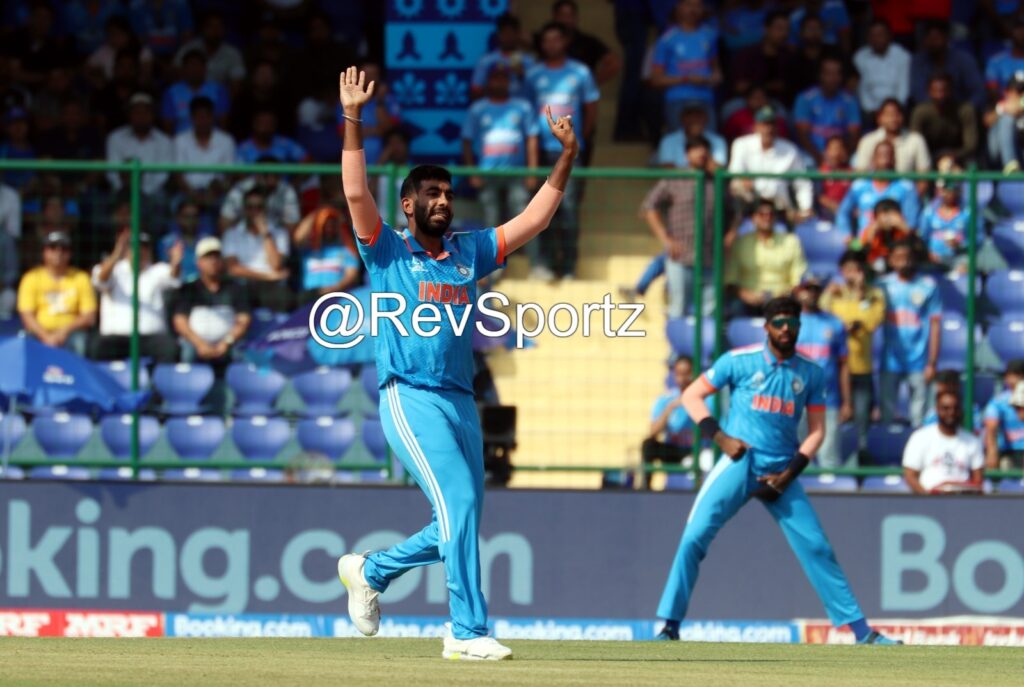Bharath Ramaraj
The venue was the Chinnaswamy Stadium in Bengaluru. It was the 2015-16 domestic season, with Gujarat taking on Delhi in the Vijay Hazare Trophy final. Perhaps due to certain indirect factors, there was suddenly some swing in the air at night. RP Singh, who had just been roped in by Gujarat from Uttar Pradesh, swung the ball this way and that way at about 72-73mph to rip through a formidable Delhi top order. But it was someone else who caught the eye – Jasprit Jasbir Singh Bumrah.
The 22-year-old didn’t just produce movement but also bowled with a burst of pace. With the new ball, he bowled in the corridor of uncertainty. When he returned for another spell, he ran through the middle and lower order by employing the short delivery and yorkers. That short ball was bowled to Nitish Rana. Rana, a left-hand batter, got into an awkward position as he tried to pull and could only top-edge the ball to the fielder at fine leg. It somehow felt as if Bumrah’s short ball was quicker than 86mph. He released it later than most other bowlers, giving lesser time for the batters to react.
In 2023, a five-wicket haul in a Vijay Hazare trophy final might struggle to find a place in any biography written on Bumrah, but that complete bowling performance served as a prototype for how India’s pace spearhead has bowled in limited-overs cricket in the years since. Different climes, different conditions, or bowling to different batters, he seems to seamlessly fit into his roles.
Bumrah’s opening spell in the World Cup game against Afghanistan reaffirmed this point about his versatility. From the onset, it looked like pristine conditions for batting. There was just a modicum of seam movement upfront. Bumrah immediately located the right line and length from where he could extract a hint of movement – on and around a good length area. In fact, around three-fourths of his deliveries were around the 6-8 metre spot.
Bumrah prodded and prodded at the Afghanistan openers for a few more overs and then came the knockout punch. In the seventh over of the innings, his length didn’t change much, but he ushered in a short ball to perhaps push the batter back slightly. And that was followed by a back-of-length delivery that took the edge of Ibrahim Zadran’s bat. The grip suggested it was canted towards first slip, but it was that nifty movement off the seam which induced the edge.
That Bumrah gauged the pitch conditions in no time and also executed his plan by landing the ball in that one small patch time and again is what makes him an all-conditions bowler. He bagged a couple more scalps in the slog overs and picked up a four-for. The same Bumrah bowled slightly differently on a track that stayed slow and low against Australia in Chennai.
Even in the previous World Cup held in England, Bumrah ended up wearing different hats, as per the requirements of the conditions and situations in the game. His current numbers in 50-over World Cups are 24 wickets at an average of just over 18, and an economy rate of 4.27. In an era where bowlers are finding it increasingly difficult to survive in the ODI arena, those are astonishing numbers.
Bumrah also seems to base his game on an old idiom – Always set the bar higher for yourself. In the past, there was a mild criticism thrown at Bumrah, that his new-ball skills, especially in knockout matches of major tournaments, could get better. In the last few years, he seems to have rectified that, adding another gear to his already potent repertoire. A case in point was his opening spell in an ODI at The Oval last year.
Bumrah’s story is well-known. In March 2013, he was spotted by John Wright, then Mumbai Indians coach, after he nailed a succession of yorkers with an unusual action in a Syed Mushtaq Ali Trophy game. He was soon drafted into the MI set-up. The very next month, he had dismissed his future India captain, Virat Kohli, in an IPL game. But it was the 2015-16 domestic season, which turned out to be the watershed moment of Bumrah’s fledgling career.
Bumrah didn’t just make a successful return from a serious injury but went on to take 14 wickets in the Syed Mushtaq Ali Trophy and 21 scalps at just 16.09 in the Vijay Hazare Trophy. That sensational spell in the final of Vijay Hazare Trophy soon catapulted him to a tour of Australia as a replacement for Mohammed Shami, his long-time pace colleague. The rest is history.





